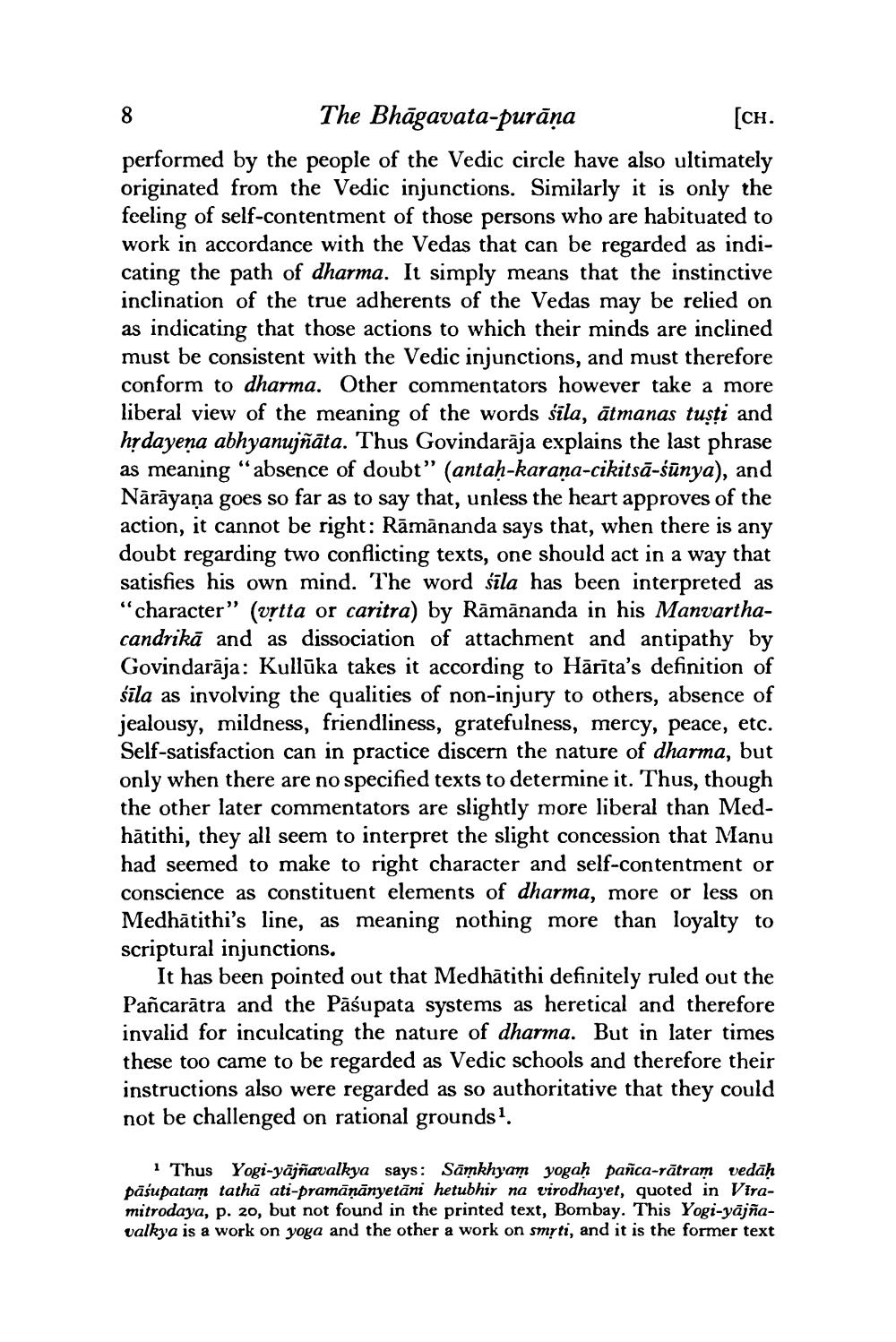________________
The Bhagavata-purāṇa
[CH.
performed by the people of the Vedic circle have also ultimately originated from the Vedic injunctions. Similarly it is only the feeling of self-contentment of those persons who are habituated to work in accordance with the Vedas that can be regarded as indicating the path of dharma. It simply means that the instinctive inclination of the true adherents of the Vedas may be relied on as indicating that those actions to which their minds are inclined must be consistent with the Vedic injunctions, and must therefore conform to dharma. Other commentators however take a more liberal view of the meaning of the words sila, ātmanas tuṣṭi and hṛdayena abhyanujñāta. Thus Govindaraja explains the last phrase as meaning "absence of doubt" (antaḥ-karaṇa-cikitsā-śūnya), and Nārāyaṇa goes so far as to say that, unless the heart approves of the action, it cannot be right: Rāmānanda says that, when there is any doubt regarding two conflicting texts, one should act in a way that satisfies his own mind. The word sila has been interpreted as "character" (vrtta or caritra) by Rāmānanda in his Manvarthacandrika and as dissociation of attachment and antipathy by Govindaraja: Kullūka takes it according to Hārīta's definition of sila as involving the qualities of non-injury to others, absence of jealousy, mildness, friendliness, gratefulness, mercy, peace, etc. Self-satisfaction can in practice discern the nature of dharma, but only when there are no specified texts to determine it. Thus, though the other later commentators are slightly more liberal than Medhatithi, they all seem to interpret the slight concession that Manu had seemed to make to right character and self-contentment or conscience as constituent elements of dharma, more or less on Medhātithi's line, as meaning nothing more than loyalty to scriptural injunctions.
It has been pointed out that Medhätithi definitely ruled out the Pancarātra and the Pasupata systems as heretical and therefore invalid for inculcating the nature of dharma. But in later times these too came to be regarded as Vedic schools and therefore their instructions also were regarded as so authoritative that they could not be challenged on rational grounds1.
8
1 Thus Yogi-yajnavalkya says: Samkhyam yogaḥ pañca-rātram vedāḥ pāśupatam tatha ati-pramāṇānyetāni hetubhir na virodhayet, quoted in Viramitrodaya, p. 20, but not found in the printed text, Bombay. This Yogi-yājñavalkya is a work on yoga and the other a work on smrti, and it is the former text




